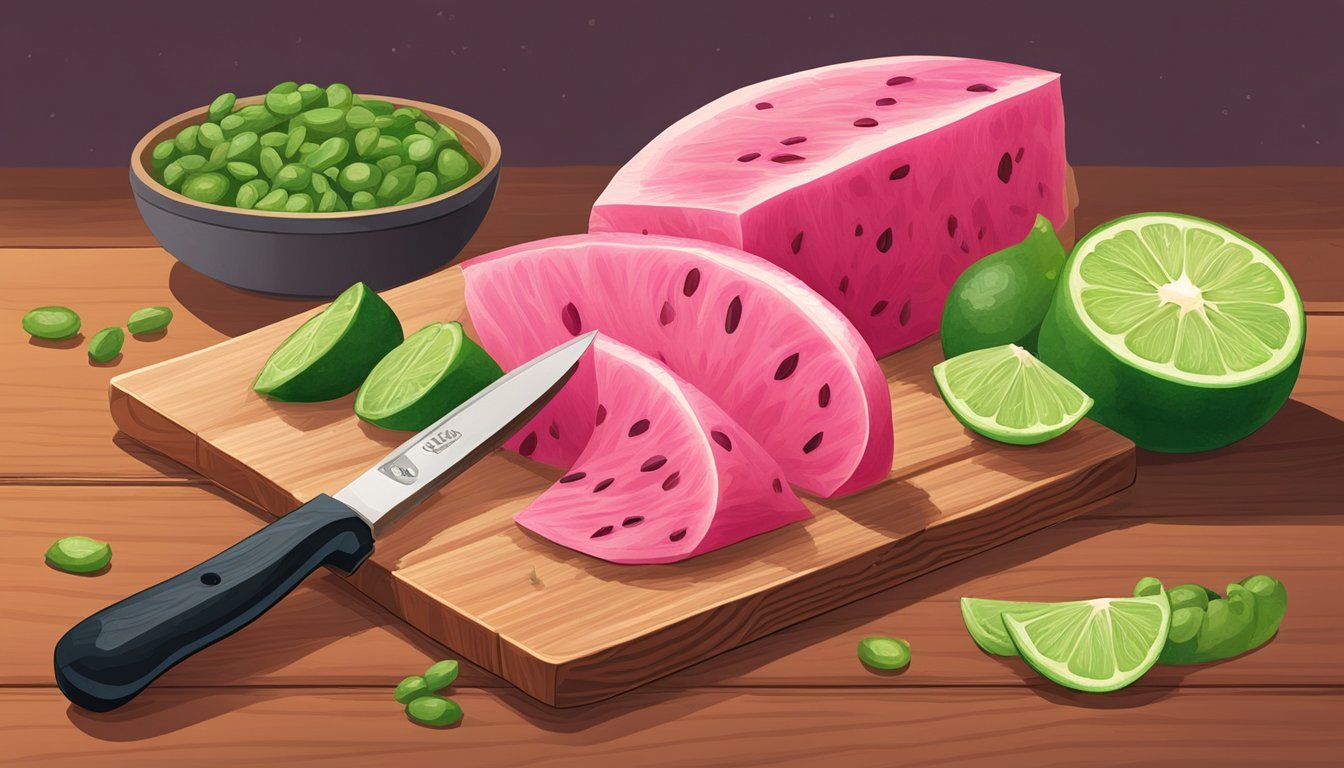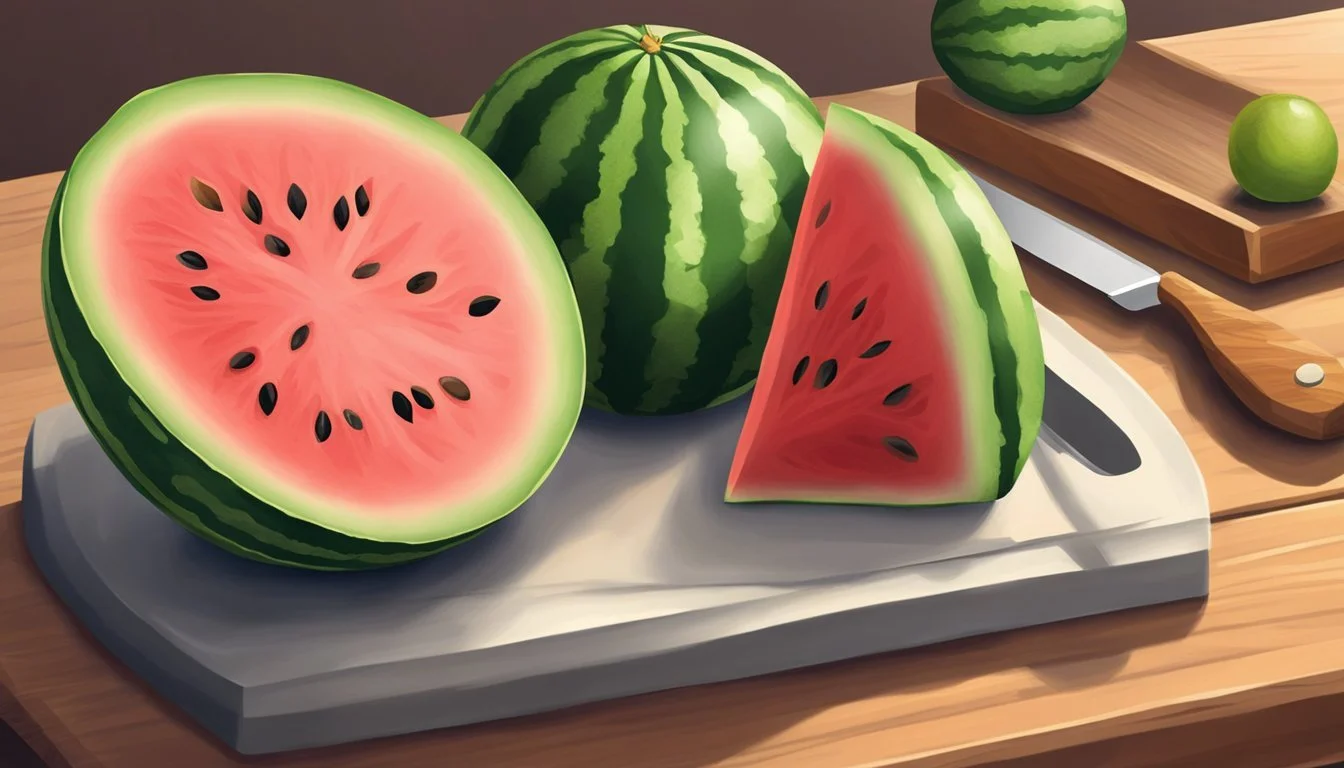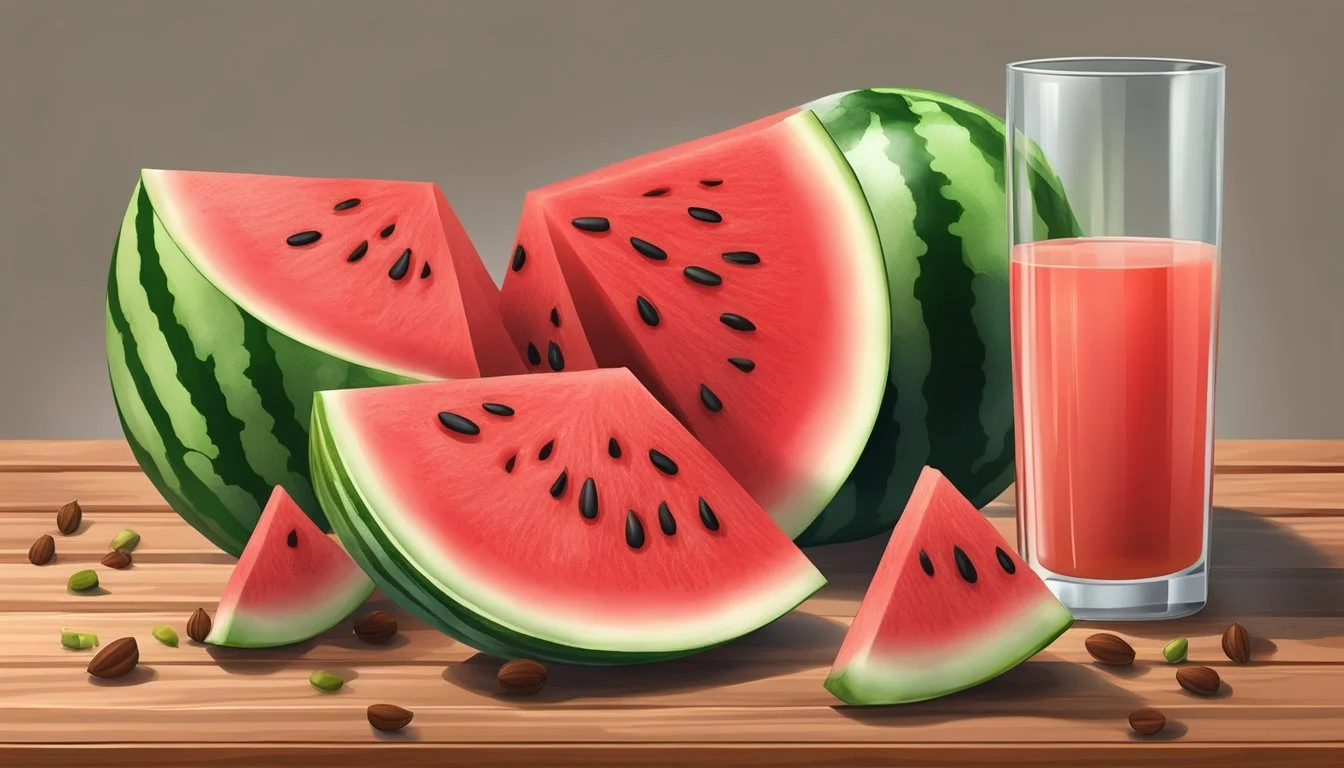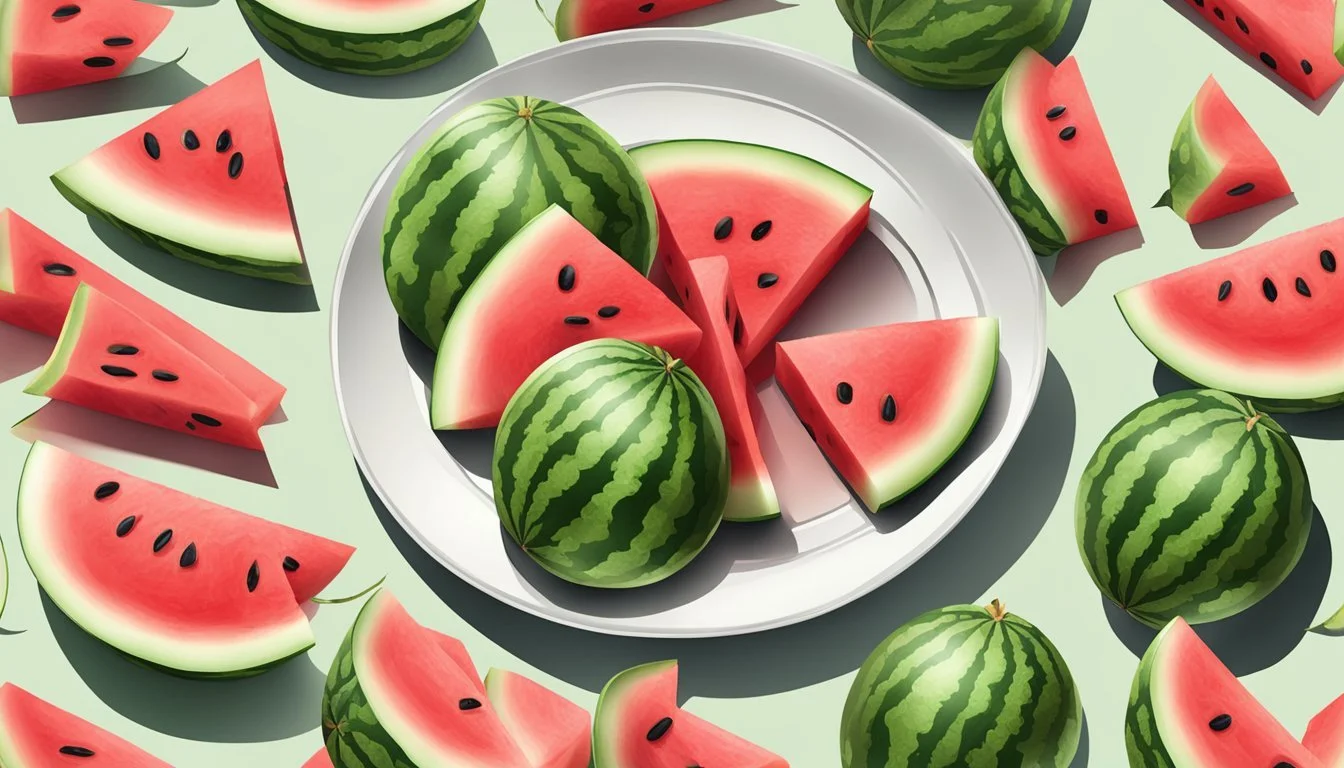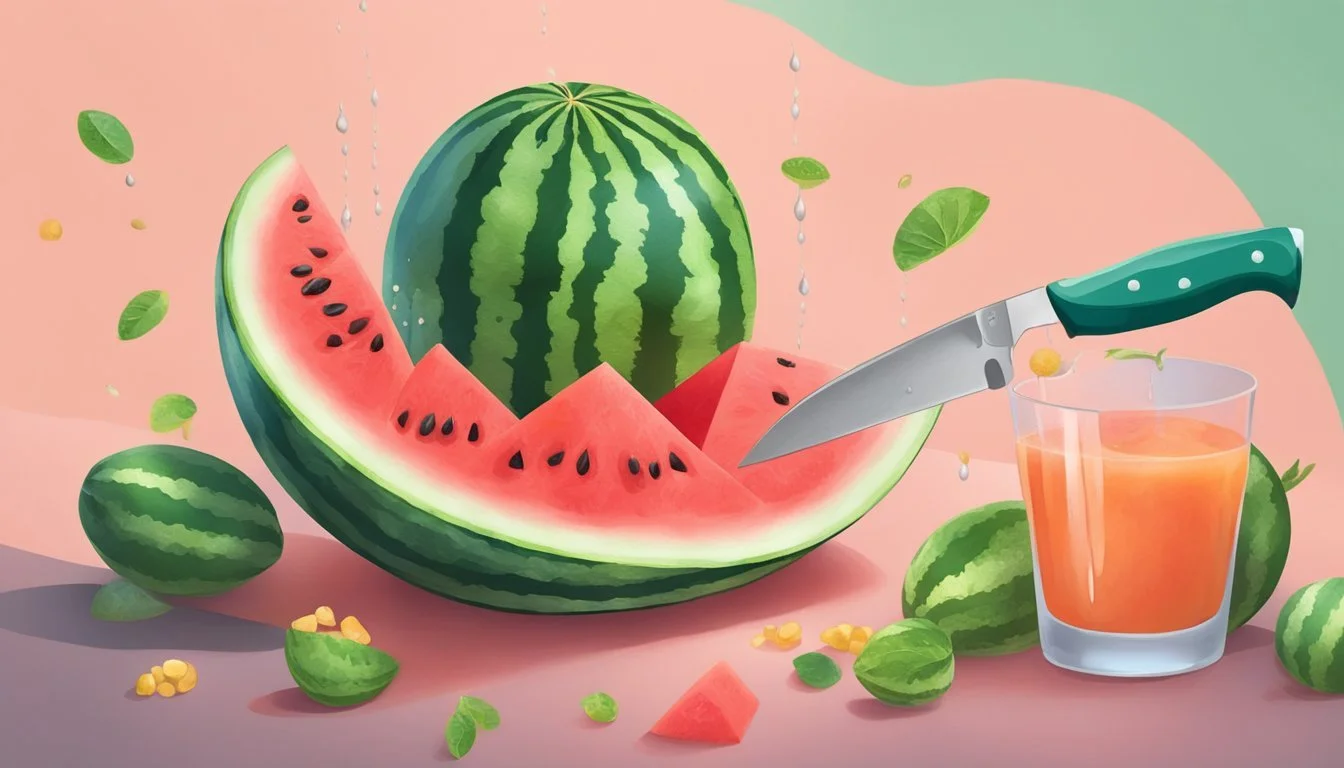How do you eat xigua:
A Guide to Enjoying Watermelon
Xigua, more commonly known as watermelon, is a refreshing and nutritiously dense fruit enjoyed around the world, especially in warm climates. With its high water content and essential nutrients, it is not only a hydrating snack but also contributes to health and wellness. The fruit is packed with vitamins A, B6, and C and provides antioxidants such as lycopene and beta-carotene, which are beneficial for skin health and may reduce the risk of certain diseases.
Eating xigua is simple and versatile. The traditional way to consume this fruit involves slicing it into wedges and eating the juicy flesh down to the rind, which is generally discarded. However, the fruit's culinary uses extend beyond simple slices. It can be cubed and added to salads, blended into smoothies, or even grilled for a smoky sweet flavor.
Experimentation with xigua is encouraged, as its mild sweetness pairs well with a range of flavors, including tangy cheese and zesty herbs. Whether one chooses to enjoy it on its own or as part of a dish, the fruit's versatility makes it easy to incorporate into any meal. It's not just a summertime treat; xigua can be a delightful addition to a healthy diet at any time of the year.
What Is Xigua?
Xigua is fruit commonly known as the Chinese watermelon. It is a type of melon that shares many characteristics with the watermelon widely enjoyed during the summer months. This sweet melon originated in Africa and is characterized by its green rind and juicy, red or pink flesh.
Nutritional Profile:
Vitamin C: Essential for immune health.
Vitamin A: Important for skin and eye health.
Antioxidants: Lycopene and beta-carotene combat free radical damage.
Comparison with Other Melons:
Watermelon: Xigua is synonymous with what is classically called watermelon.
Cantaloupe (how long does cantaloupe last?): Another popular melon, distinguished by its netted rind and orange flesh.
In culinary terms, xigua can be used similarly to other sweet melons. It is often eaten on its own or incorporated into salads, dressings, and refreshments. Nutritionally, xigua is recognized for its hydration benefits, owing to its high water content. It also provides a modest amount of fiber and is low in calories, which makes it an attractive option for a healthy, refreshing snack.
The distinction of xigua from other watermelon varieties may lie in regional nomenclature or specific cultural preferences. Nonetheless, the term 'xigua' is embraced in contexts where there's an emphasis on this fruit's origin or specific culinary uses.
Nutritional Profile of Xigua
Xigua, commonly known as watermelon, is a nutrient-dense fruit that contributes favorably to a healthy diet. It is characterized by its rich vitamin and mineral content, low-calorie nature, and a composition that includes essential macro-nutrients.
Vitamins and Minerals
Xigua is a substantial source of vitamins A and C, which are crucial for maintaining good vision, skin health, and immune function. It also contains vitamin B6, which is important for brain health and the conversion of food into energy. In terms of minerals, xigua provides potassium, known for its role in maintaining proper heart function and muscle contractions, and magnesium, which is vital for muscle and nerve function, blood glucose control, and blood pressure regulation.
Vitamin A: Essential for vision and immune function
Vitamin C: Important for skin health and immune support
Vitamin B6: Assists in cognitive development and function
Potassium: Helps regulate fluid balance and blood pressure
Magnesium: Crucial for muscle and nerve function
Calorie Content
Xigua is celebrated for its low calorie content. A standard serving of watermelon (approximately 100 grams) typically contains only 30 calories, making it a refreshing and guilt-free choice for those monitoring their caloric intake.
Calories per 100g: 30
Macro-nutrients
The fruit is predominantly made up of water, which accounts for about 90-92% of its weight, providing a hydrating experience with every bite. The fiber content in xigua aids in maintaining digestive health. Regarding proteins and fats, xigua contains them in negligible amounts. It's the presence of citrulline, an amino acid, that sets it apart, as it may promote blood flow and cardiovascular health.
Water Content: Very high (90-92%)
Dietary Fiber: Important for digestive health
Citrulline: Beneficial for cardiovascular health
Health Benefits of Eating Xigua
Xigua, also known as watermelon, is celebrated for its nutritious profile, which includes essential vitamins and antioxidants that confer a variety of health benefits. Rich in nutrients yet low in calories, xigua is a wholesome addition to a healthy diet.
Heart Health
Watermelon, which contains lycopene, an antioxidant linked to heart disease prevention, is beneficial for the cardiovascular system. Studies suggest that lycopene may help lower blood pressure and cholesterol levels, two major risk factors for heart disease. Additionally, vitamin C, found in xigua, contributes to the strength and integrity of artery walls.
Cancer Prevention
The lycopene in xigua is not only good for the heart but it's also studied for its potential role in cancer prevention. It may help reduce the risk of some cancers by combating free radicals that cause cell damage. Moreover, xigua contains vitamins A and C, both noted for their antioxidant properties.
Hydration and Digestion
Xigua is made up of approximately 92% water, making it highly hydrating which is essential for maintaining healthy digestion and regular bowel movements. The fiber in xigua also aids in promoting a healthy digestive tract by providing bulk to stool and reducing constipation.
Skin and Hair Wellness
Watermelon supports skin and hair health owing to its vitamin A content, which is vital for the production of sebum that keeps hair moisturized. Vitamin C is crucial for collagen production, which can reduce wrinkles and ensure that both skin and hair remain healthy and lustrous.
Preparation and Consumption
In this section, we cover the essential steps of enjoying xigua (watermelon), from selection at the market to serving it at your table.
Selecting and Storing
One should choose a watermelon that is heavy for its size with a rind free from bruises or soft spots. A creamy yellow spot from where it rested on the ground is a sign of ripeness. Once home, watermelons can be stored at room temperature for about two weeks or refrigerated for a shorter period to keep them cold.
Cutting Techniques
Cutting watermelon can be done in various ways depending on the intended use. For ease and neatness, one can slice the melon into halves, then quarters, followed by slicing the flesh away from the rind and cutting it into cubes or triangles. Keeping the rind on while slicing it into wedges can make it easier for individual serving and consumption.
Serving Suggestions
Watermelon is mostly served fresh. It can be eaten on its own or added to fruit salads for a refreshing treat. For a creative serving suggestion, watermelon cubes can be combined with feta cheese and mint for a delightful salad. Additionally, watermelon juice is a popular beverage option. One can simply blend cubed watermelon and strain it for a refreshing drink.
Prep time: Varies based on the serving style.
Total time: From selection to serving, the total time could range from a few minutes for simple cuts to about 15-30 minutes for more elaborate arrangements.
Edible parts: The pink/red flesh is typically consumed, but the rind is also edible and can be used in pickles or preserves.
Watermelon in Cuisine
Watermelon, also known as xigua, is a versatile fruit in culinary applications. It can complement both sweet and savory dishes, often bringing a refreshing and hydrating element to a variety of recipes.
Xigua in Salads
Salads offer an excellent canvas for the juicy crispness of xigua. A classic combination involves pairing cubed watermelon with feta cheese, red onion, cucumber, and a sprinkle of mint or basil leaves for an aromatic touch. The sweetness of the fruit contrasts with the salty feta and the sharpness of the onion, creating a well-rounded flavor profile. For dressing, a simple lime juice and extra-virgin olive oil vinaigrette seasoned with sea salt and garlic perfectly enhances the salad without overpowering its delicate balance.
Watermelon Juice and Beverages
The high water content of watermelon makes it ideal for hydration in the form of juice or blended beverages. Watermelon juice is refreshing on its own, but can also be enhanced with lime for added zest. For a tropical twist, watermelon milk, known as Xigua Niu Nai in Taiwanese cuisine, blends the fruit with milk (or a dairy-free alternative) and optional sugar to taste, served chilled for a creamy and fruity drink. It's a delightful way to incorporate watermelon into your beverage selection.
Creative Watermelon Pairings
Apart from traditional uses, watermelon can be integrated into more creative pairings. For instance, a savory application might include watermelon cubes tossed with jalapeño or serrano pepper for a spicy kick. Some innovative recipes might even integrate avocados and watermelon as a fruit-centric side dish, garnished with basil or sea salt to heighten the flavor experience. The combination of watermelon's sweetness with savory components like avocado and peppers creates a unique and satisfying dish that navigates the spectrum of flavors and textures.
Choosing Watermelon Varieties
When selecting a watermelon, consumers can encounter a variety of types, each with distinct characteristics. Among the plethora of choices, the 'Little Darling' variety is a notable mention due to its compact size and sweet, red flesh. These melons bear a dark green hard rind and weigh approximately five to seven pounds, ideal for personal consumption.
When evaluating watermelons, it’s crucial to consider the skin or rind. A quintessential watermelon generally has a green exterior. However, the presence of a yellowish spot on the rind shouldn't be a cause for concern; it actually signifies where the melon rested on the ground and can be an indicator of ripeness.
In their quest to choose the best melon, shoppers should inspect the whole fruit for uniformity. The rind should be free from cuts, bruises, or soft spots. A consistent hard rind is indicative of a healthy melon. Inside, the watermelon should have a soft fleshy inside typically ranging in color from pink to deep red, depending on the variety.
Below is a brief outline to aid in selecting watermelon varieties:
Size & Weight: Personal-sized like 'Little Darling' vs Larger varieties.
Rind Appearance: Dark green, uniformly hard with no deformities.
Field Spot: Creamy or buttery yellow, an indicator of ample ripening time.
Flesh Color: Look for vibrant pink to red, which suggests a high sugar content and ripeness.
By adhering to these guidelines, consumers can make informed decisions and enjoy the succulent taste of their chosen melons.
Xigua for Specific Dietary Needs
Xigua, known for its hydrating properties and rich nutrient profile, is suitable for various dietary needs. It offers essential vitamins and low calorie count, making it a viable choice for those on specific diets.
Xigua in Low-Sugar Diets
Xigua can be part of a low-sugar diet due to its natural sweetness accompanied by a lower sugar content compared to many other fruits. Its high water content, which accounts for about 90% of its weight, delivers hydration with minimal impact on blood sugar levels. When consumed in moderation, xigua provides the palate with a sweet taste without excessive sugar intake.
Nutritional Profile of Xigua (per 100g serving):
Calories: 30 kcal
Carbs: 7.55 g
Sugar: 6.2 g
Fat: 0.15 g
Nutritional Considerations for Diabetes
For individuals with diabetes, monitoring carb and sugar intake is essential. Xigua's low-calorie count and moderate sugar content make it a possible snack option. However, it's important to keep portion sizes in check, as the carbs can add up and impact blood glucose levels.
Recommended serving size for diabetes: 1 cup of diced watermelon (152 grams)
Carbohydrates in recommended serving: Approximately 11.6 grams
Sugar in recommended serving: Approximately 9.4 grams
People with diabetes should include xigua in their meal planning as part of their fruit intake but remain mindful of its carbohydrate content. Consulting with a healthcare professional regarding individual dietary needs is always recommended.
Complementary Foods and Nutrient Absorption
When consuming xigua or watermelon, one can enhance nutrient intake and absorption by strategically pairing it with other foods. The right combinations can help maximize the benefits from the fruit's rich nutritional profile, including its antioxidants, fiber, and potassium content, which are important for heart health, blood vessels, blood flow, and collagen production.
Pairing Fruits for Maximum Benefits
Combining xigua with fruits that provide complementary nutrients can significantly benefit the body's nutritional intake. For example, pairing watermelon, which is high in antioxidants such as lycopene and vitamins C and A, with a fruit high in vitamin E, like kiwi or mango, can boost antioxidant uptake. Eating vitamin C-rich fruits alongside watermelon may also aid in collagen production, crucial for skin health and wound healing.
Antioxidants: Kiwi, Mango
Collagen Production: Citrus fruits, Pineapple
Incorporating Proteins and Healthy Fats
To further enhance the absorption of watermelon's nutrients, it's beneficial to pair it with proteins and healthy fats. The amino acids from proteins help in the repair and growth of body tissues, strengthened by watermelon's potassium and fiber content. Including healthy fats in a meal with watermelon can promote the absorption of its fat-soluble vitamins. Adding a handful of almonds or walnuts provides both protein and healthy fats.
Protein Sources: Chicken, Fish, Legumes
Healthy Fats: Avocado, Olive oil, Nuts
By combining watermelon with these nutrient-dense foods, individuals can improve their heart health and support the integrity of blood vessels and blood flow. The integration of protein bolsters the nutritional value of the meal, while healthy fats assist in the absorption process, ensuring that the body receives the maximum possible benefits from each food item.
Potential Risks and Allergies
While xigua, commonly known as watermelon, is known for its health benefits, such as hydration and providing vitamins, certain individuals may face potential risks and allergies when consuming this fruit. It is crucial for consumers with known sensitivities to recognize the symptoms and understand the implications of existing health conditions on xigua consumption.
Allergic Reactions to Xigua
Individuals who are allergic to xigua may experience immediate allergic reactions, which can range from mild to severe. Symptoms specific to xigua allergy include:
Localized reactions: Itching in the mouth, scratchy throat, or swelling of the lips, mouth, tongue, and throat.
Systemic reactions: Facial swelling, abdominal pain, nausea, vomiting, or difficulty swallowing. In rare cases, anaphylaxis, characterized by dizziness, low blood pressure, or shock, may occur.
Adhering to these precautions can assist in preventing allergic reactions:
Avoidance: Steer clear of xigua and products containing xigua extracts.
Reading labels: Diligently check for xigua presence in ingredient lists.
Medical advice: Consult a healthcare provider if xigua allergy is suspected.
Xigua Consumption and Health Conditions
For individuals with specific health conditions, xigua consumption may have particular considerations:
Diuretic effects: Watermelon's natural diuretic properties could affect those with kidney disorders.
Sugar content: Despite being low in calories, xigua's sugar content should be monitored by individuals with diabetes.
Anti-inflammatory properties: The fruit's anti-inflammatory effects are potentially beneficial for those with joint pain or inflammation-related diseases.
Antioxidants: Containing lycopene and beta-carotene, xigua can aid in neutralizing free radicals, thus possibly reducing the risk of some diseases.
It is recommended for individuals with pre-existing health conditions to consult with their healthcare provider before making any significant dietary changes, including the regular consumption of xigua.
Cultural Significance of Xigua
Xigua, commonly known as watermelon, is not merely a refreshing fruit but laden with cultural weight in various societies. It is a staple in many cultures, associated with festivities and often symbolizes joy, community, and hospitality.
In China, xigua (西瓜) is more than just a summer treat; it encompasses a social culture. The term "watermelon-eating crowd" in Chinese refers to individuals who observe events with casual interest, and xigua consumption becomes a communal, spectator activity. Watermelons are also integral during family gatherings and social events, enhancing the kinship and convivial atmosphere.
Originating from Africa, watermelons have travelled across the globe and integrated into diverse cultural cuisines. They have served as a source of nutrition and hydration in arid regions, owing to their high water content. The importance of watermelon in Africa pervades both history and present times, often featured in indigenous artworks and storytelling.
Moreover, xigua has been recognized as a superfood. It is a term used to describe nutrient-rich foods that are particularly beneficial for health and well-being. Xigua's wealth of vitamins, antioxidants, and hydrating properties aligns it with superfood status, offering substantial health benefits.
Cultural Representations:
China: Social interaction, casual observation
Africa: Historical importance, art, storytelling
Global: Symbol of hospitality, nourishment, and celebration
This significance of xigua spreads across culinary practices, seasonal festivities, and even gift-giving, portraying a uniqueness in the cultural fabric of societies around the world.
Sustainability and Environmental Impact
When evaluating the sustainability and environmental impact of consuming xigua, commonly known as watermelon, it's important to consider the factors that influence its ecological footprint. Watermelon cultivation can be resource-intensive, requiring substantial amounts of water and involving the use of agrochemicals like pesticides and fertilizers.
Water Usage: Watermelons have a considerable water footprint; however, it varies based on region and farming practices. They typically require 50-100 inches of water per year.
Agrochemicals: Intensive farming methods may result in high usage of pesticides and fertilizers, which can have detrimental effects on surrounding ecosystems and groundwater.
To eat watermelon more sustainably, consumers can undertake several strategies:
Seasonal Purchasing: Acquiring watermelons when they're in season locally reduces transportation emissions and supports local agriculture.
Responsible Disposal: Proper disposal or composting of watermelon rinds and packaging minimizes landfill waste.
Supporting Sustainable Practices: Choosing watermelons from farms that employ water conservation and reduced chemical use helps lessen environmental impact.
By being mindful of these aspects, individuals can enjoy watermelons while also contributing positively to green ecology and environmental concerns.
Frequently Asked Questions
This section provides clear guidance on storing cut xigua, whether it can be cooked, and its suitability for pets.
How to Store Cut Xigua
After cutting xigua, it should be stored in the refrigerator to maintain its freshness. It's best kept in an airtight container or wrapped tightly in plastic wrap to prevent it from absorbing other flavors and to maximize its shelf life.
Can Xigua Be Cooked?
Xigua is generally consumed raw, as cooking can lead to a loss of texture and flavor. However, it can be grilled or incorporated into certain cooked dishes for creative culinary applications, though this is less common.
Is Xigua Suitable for Pets?
Xigua can be given to pets like dogs in moderation, as it is hydrating and a source of vitamins. However, only the flesh should be offered, as seeds and rind could pose a choking hazard or cause gastrointestinal upset. It's also essential to confirm with a veterinarian before introducing any human foods into a pet's diet.
Conclusion
Eating xigua, commonly known as watermelon, offers a refreshing experience along with a multitude of health benefits. It is rich in vitamins A, B6, and C, and packed with antioxidants like lycopene and beta-carotene, which are essential for skin health and may help prevent some diseases.
One can consume xigua by:
Cutting into slices or cubes
Blending into juice or smoothies
Incorporating into salads or salsas
Regarding its preparation, individuals have the flexibility to be creative. A simple salad recipe includes:
Mix: Olive oil, lime juice, garlic, and salt to create a dressing.
Combine: Watermelon chunks, cucumber, and red onions; then drizzle with half the dressing.
Top with: Feta, avocado, mint, and serrano pepper before adding the remaining dressing.
Season: Adjust according to taste preference.
Eating xigua is particularly enjoyable during hot weather due to its hydrating properties. It has a low-calorie count, making it a smart choice for individuals watching their calorie intake. For its nutritional content, a ripe, red-fleshed xigua is preferable as it contains higher levels of lycopene.
In conclusion, xigua is a versatile fruit that supports well-being and can be enjoyed in numerous ways, fitting seamlessly into various diet plans and recipes. Individuals seeking to maintain a healthy lifestyle can benefit from incorporating this delectable fruit into their regular diet.



